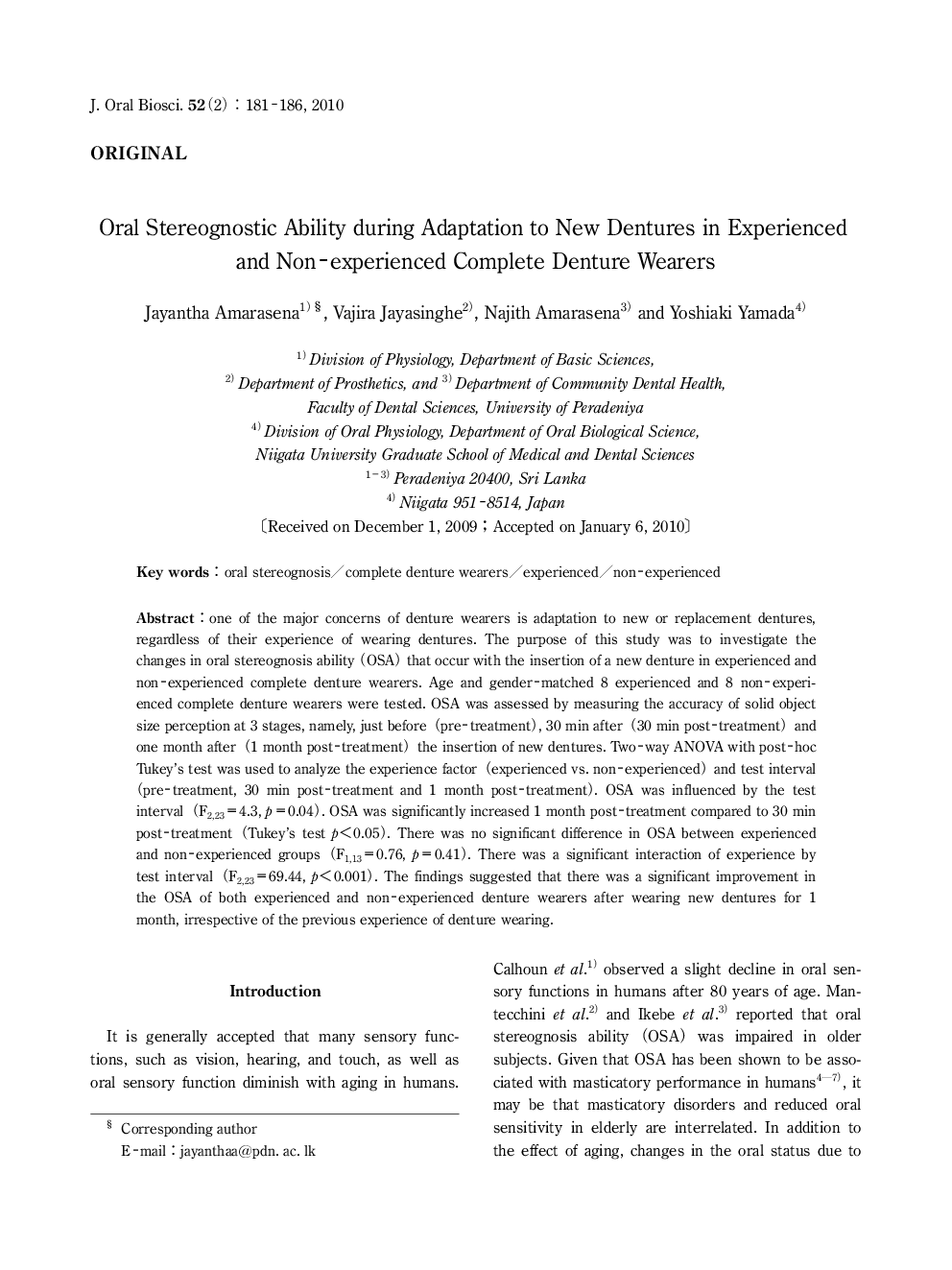| کد مقاله | کد نشریه | سال انتشار | مقاله انگلیسی | نسخه تمام متن |
|---|---|---|---|---|
| 2776984 | 1152656 | 2010 | 6 صفحه PDF | دانلود رایگان |

one of the major concerns of denture wearers is adaptation to new or replacement dentures, regardless of their experience of wearing dentures. The purpose of this study was to investigate the changes in oral stereognosis ability (OSA) that occur with the insertion of a new denture in experienced and non-experienced complete denture wearers. Age and gender-matched 8 experienced and 8 non-experienced complete denture wearers were tested. OSA was assessed by measuring the accuracy of solid object size perception at 3 stages, namely, just before (pre-treatment), 30 min after (30 min post-treatment) and one month after (1 month post-treatment) the insertion of new dentures. Two-way ANOVA with post-hoc Tukey's test was used to analyze the experience factor (experienced vs. non-experienced) and test interval (pre-treatment, 30 min post-treatment and 1 month post-treatment). OSA was influenced by the test interval (F2,23=4.3, p=0.04). OSA was significantly increased 1 month post-treatment compared to 30 min post-treatment (Tukey's test p<0.05). There was no significant difference in OSA between experienced and non-experienced groups (F1,13=0.76, p=0.41). There was a significant interaction of experience by test interval (F2,23=69.44, p<0.001). The findings suggested that there was a significant improvement in the OSA of both experienced and non-experienced denture wearers after wearing new dentures for 1 month, irrespective of the previous experience of denture wearing.
Journal: Journal of Oral Biosciences - Volume 52, Issue 2, 2010, Pages 181-186